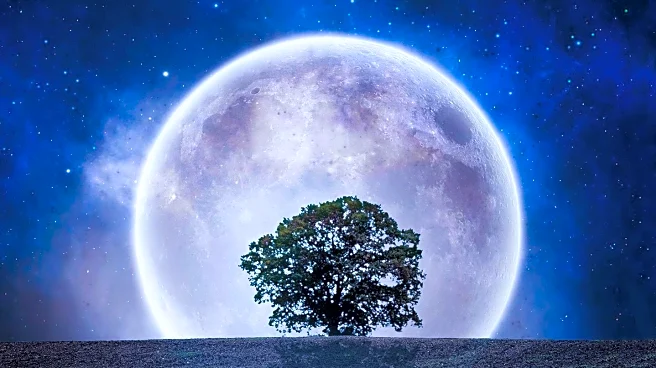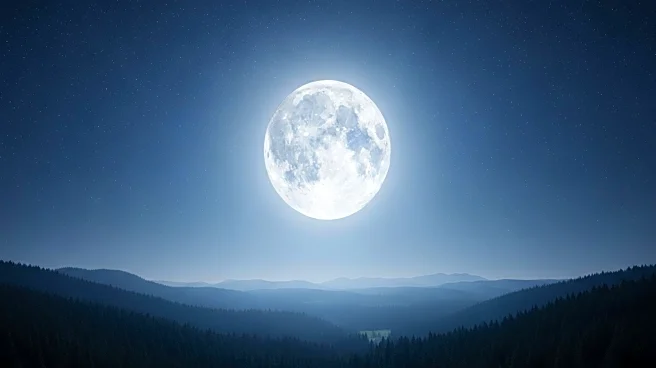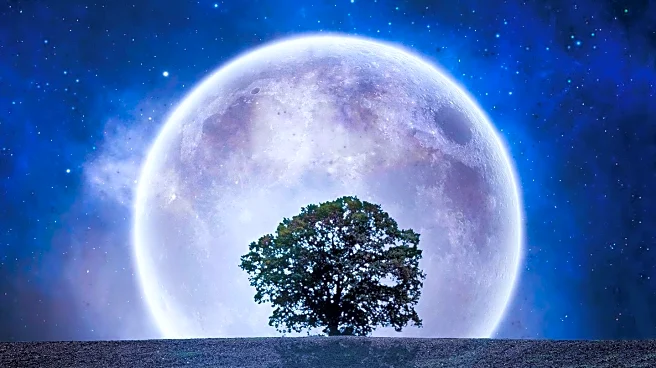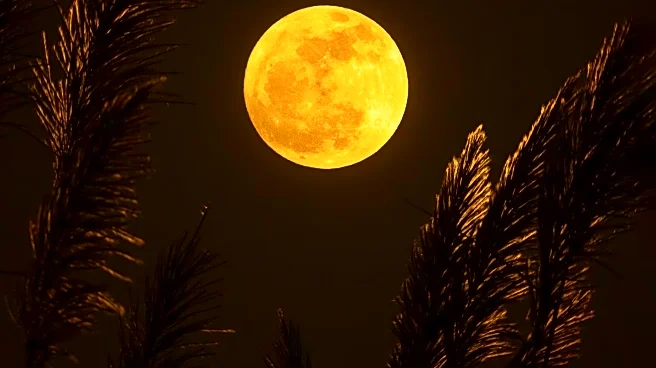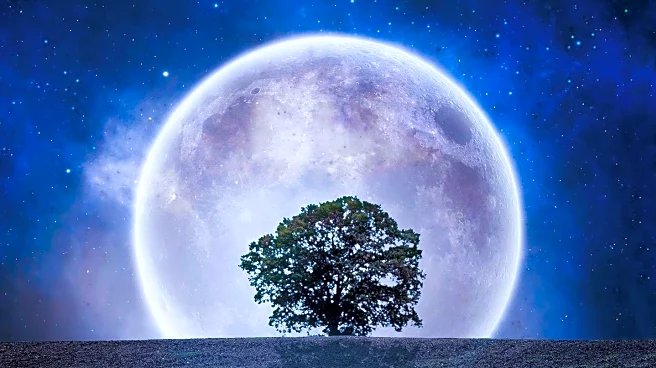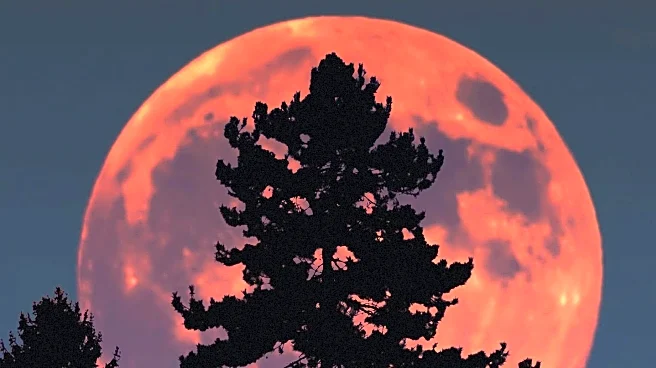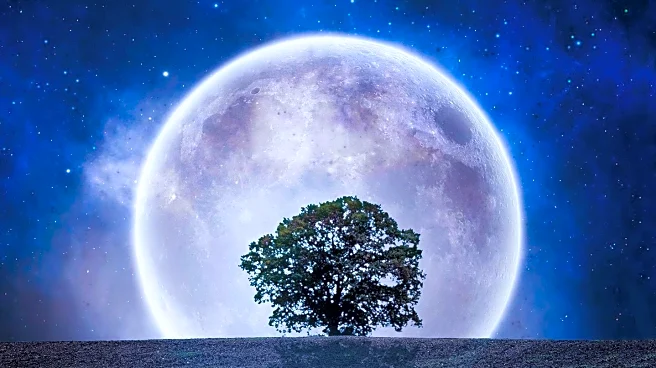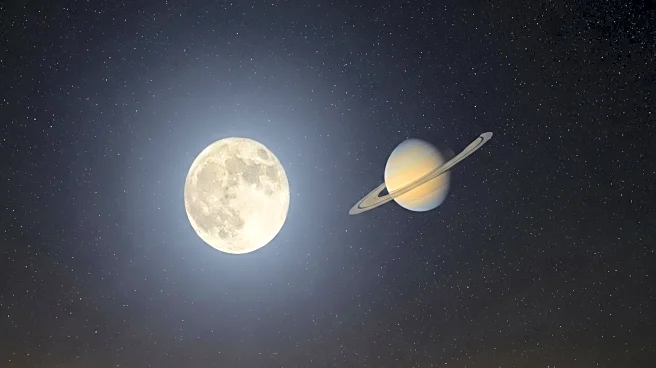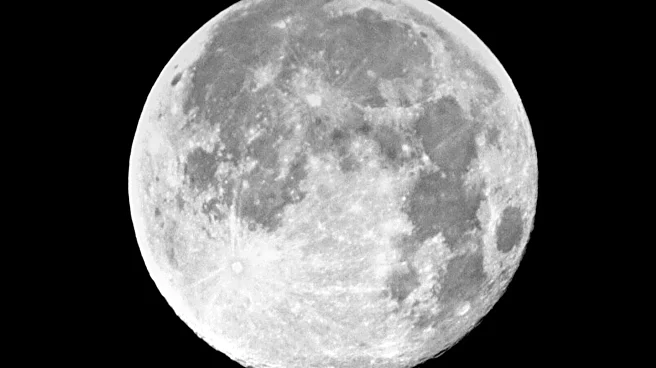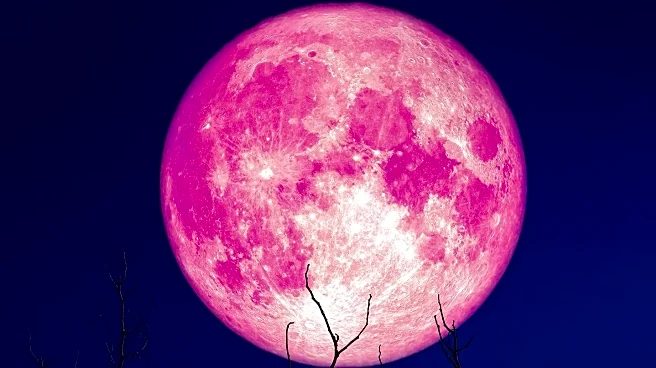What is the story about?
What's Happening?
The Harvest Moon, the first supermoon of the year, rose early on Monday evening, illuminating the night sky with its brightness and size. This full moon is the closest to the autumnal equinox, which occurred on September 22, and is traditionally named for its role in aiding farmers with extended evening light for harvesting crops. The Harvest Moon appears 14 percent larger and 30 percent brighter than the average full moon due to its proximity to Earth. This year, the Harvest Moon is notable for occurring in October, a rarity that last happened in 2020 and will next occur in 2028. The moon's golden glow is most pronounced as it rises above the horizon, providing a spectacular celestial display.
Why It's Important?
The occurrence of the Harvest Moon in October instead of its usual September date is significant for astronomers and sky watchers, as it offers a unique opportunity to observe the moon's enhanced size and brightness. This event is part of a series of three consecutive supermoons in 2025, highlighting the moon's varying distance from Earth and its impact on visual perception. The Harvest Moon's timing and appearance can influence cultural and agricultural practices, as it traditionally provides farmers with additional light for harvesting. The event also draws attention to the natural cycles and celestial phenomena that affect life on Earth.
What's Next?
Following the Harvest Moon, the next supermoons are scheduled for November 5, known as the Beaver Moon, and December 4, known as the Cold Moon. These upcoming supermoons will continue to offer opportunities for observation and appreciation of the moon's role in Earth's natural cycles. Sky watchers and astronomers will likely prepare for these events, considering factors such as weather conditions that may affect visibility. The series of supermoons may also inspire educational and cultural activities centered around lunar phenomena.
Beyond the Headlines
The Harvest Moon's occurrence in October rather than September raises questions about the long-term patterns of lunar cycles and their implications for both scientific study and cultural traditions. As climate and environmental changes continue to impact natural cycles, understanding these shifts becomes increasingly important. The Harvest Moon serves as a reminder of the interconnectedness of celestial events and human activities, prompting reflection on how these phenomena influence agricultural practices and cultural celebrations.
AI Generated Content
Do you find this article useful?
